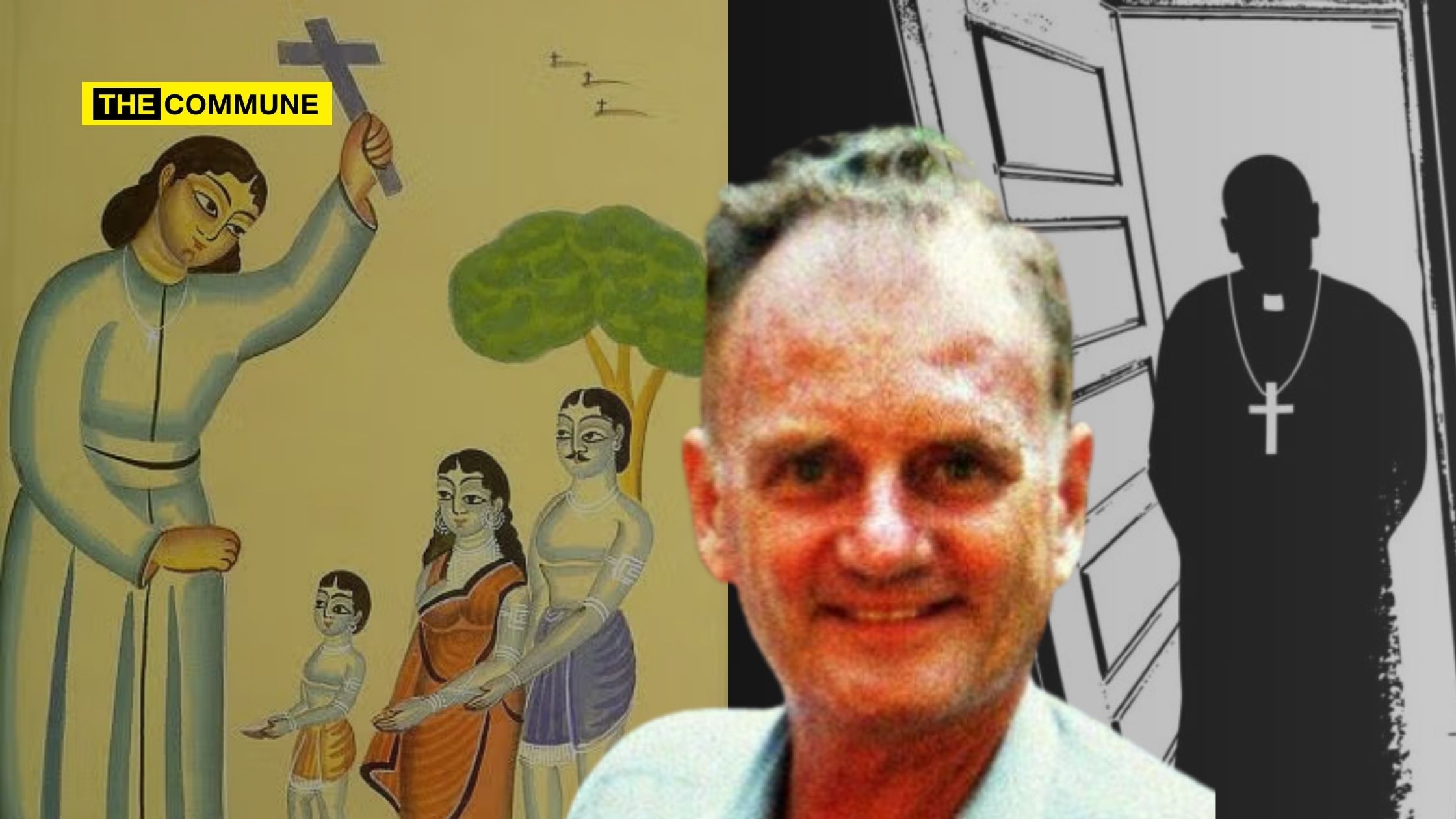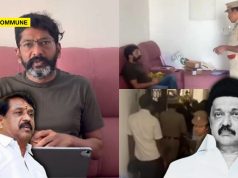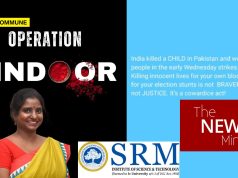
The murder of Australian missionary Graham Staines and his two sons in Odisha in January 1999 has long been portrayed globally as an emblematic instance of anti-Christian violence in India. International media coverage, subsequent films like The Least of These: The Graham Staines Story, and official narratives have all cast the incident in stark communal terms, often ignoring the complex sociopolitical undercurrents that preceded the tragic event.
First let us take a look at Graham Staines and what he indulged in, in the name of missionary activity.
Graham Staines
Graham Staines, often portrayed as a leprosy relief worker, was primarily engaged in evangelism among tribal communities in Odisha. Monthly despatches published in the Tidings newsletter by Australian Missionary Tidings reveal a sustained pattern of missionary activity, including Bible sales, tract distribution, baptisms, and Vacation Bible Schools. Notably, Christian literature was distributed during Hindu festivals like the Jagannath Rath Yatra, a move that, while not illegal, raised moral and cultural concerns. Despatches from 1997 to 1998 indicate active promotion of conversions, with repeated mentions of baptisms, jungle camps for evangelism, and testimonies of individuals claiming “miracle cures” as motivation for converting. Inquiries noted that promises of healing led some to convert, although many reverted to Hinduism when their problems persisted. It was also observed that neither the missionaries nor local authorities were aware of the Orissa Freedom of Religion Act, 1967, which mandates reporting of conversions and baptisms to district magistrates—a legal requirement that was consistently ignored.
Furthermore, missionary activities targeted minors through Sunday schools and Vacation Bible Schools, raising ethical concerns. Despatches also mention internal conflicts within church groups and disputes over mission property. Despite being known for leprosy work, Staines’ reports provide scant evidence of medical outreach, suggesting that his primary focus was religious conversion. His prolonged activities arguably violated the Orissa Freedom of Religion Act and contributed to social tensions in tribal areas.
Now let us take a closer look at official testimonies, judicial records, and inquiries about Staines and his death that reveal a more tangled and uncomfortable truth—one involving allegations of sexual misconduct, coercive conversions, community tensions, and judicial revisionism under institutional pressure.
A Testimony Silenced: Hemalata Karua’s Allegations
Among the most disturbing and least-discussed aspects of the case is the testimony of Hemalata Karua, a tribal woman from Machhagarh village. She appeared before Sessions Judge M.N. Pattnaik and accused Graham Staines of sexually assaulting her during a Christian camp organized at the border of Mayurbhanj and Keonjhar districts. The camp, held on the eve of Makar Sankranti in January 1999, was a yearly event where new converts would gather.
According to her testimony, Hemalata and her husband were persuaded to convert to Christianity with promises of escaping their financial hardships. They stayed overnight at the camp, where Hemalata recounted that Staines allegedly entered her tent under the pretext of a meditation session and tried to molest her. “He entered and asked me to close my eyes and meditate. As I was meditating he laid his hands on my body, I protested but he continued to persuade me, saying physical relationship with him would benefit me,” she told the judge. She stated that when she screamed, Staines fled the scene, and she left the camp the following morning. Twenty days later, she alleged, Gladys Staines, Graham’s wife, approached her to apologize for her husband’s behavior.
Institutional Pressure And Supreme Court’s Backtrack
In the original 2005 Supreme Court verdict in the sentencing of Dara Singh, the man convicted for the murders, Justices P. Sathasivam and B.S. Chauhan had noted, “There are materials to suggest that the missionaries were involved in forceful conversions… The intention was to teach a lesson to Graham Staines about his religious activities, namely, converting poor tribals to Christianity.”
But in 2011, this part of the judgment was expunged following intense lobbying by Christian organizations and mainstream media. The final revised version read, “There is no justification for interfering in someone’s religious belief by any means.”
The original judgment’s critical reference to conversion practices was removed in what critics argue was an unusual instance of judicial rollback driven by external pressure.
The Wadhwa Commission’s Findings: A Sobering Reality
The Justice D.P. Wadhwa Commission, instituted to investigate the murders, recorded testimonies that painted a very different picture of missionary activities in the region. Several tribal witnesses revealed that conversion promises were often linked to miraculous health cures and social mobility.
“Many witnesses who testified before the Commission said that ‘Cure from Health Problems’ was the prime reason for conversion to Christianity,” wrote Justice Wadhwa. “Some of the witnesses reverted to Hinduism when the promised Magic Cures did not materialise.”
Moreover, the Commission criticized local officials, “Both the District Magistrates and the Superintendent of Police also did not have a proper working knowledge of the Orissa Freedom of Religion Act and were not aware of the provisions of the Act and its rules.”
The Wadhwa Commission also documented how certain high-profile cases used to demonize Hindus were, in fact, unrelated to religious conflict. In one instance, two tribal children were found murdered in Kandhamal district. The media immediately declared it an attack on Christians. However, investigations revealed that the perpetrator was a relative of the victims—himself a Christian. This was mentioned in BJP leader Arun Shourie’s blog.
Tensions in the Community: Not Religious, But Cultural
The conflict wasn’t merely between Hindus and Christians but between tribal converts and non-converts. The CBI court that tried Dara Singh noted, “The tribals converted to Christianity distanced themselves from the non-Christian tribals and adopted anti-tribal customary practice of eating beef and ploughing land during Raja festival… Tension was brewing between Christian and non-Christian communities.”
Such religious conversion, the court said, disrupted community cohesion and tribal identity, ultimately leading to backlash.
Political And Media Whitewashing?
BJP MP Satya Pal Singh accused Staines of molesting as many as 30 tribal girls and converting them under duress. He also alleged that a senior Congress leader influenced the CBI to exclude such testimonies from the charge sheet. The National Commission for Minorities disregarded the Wadhwa Commission’s conclusion that Dara Singh had no links to the Bajrang Dal, branding him a member nonetheless.
The Role of Media And Propaganda Films
In 2019, the Christian-funded film The Least of These portrayed Graham Staines as a martyr, focusing on religious harmony while sidestepping serious allegations made against him. Directed by Aneesh Daniel and starring Stephen Baldwin—known for his evangelical Christian activism—the film was criticized for whitewashing Staines’ activities and vilifying Hindu resistance.
Victor Abraham, the film’s producer and founder of Skypass Entertainment, is a known Christian fundamentalist. Despite claims that the movie isn’t propaganda, its promotional campaigns and selective storytelling tell a different story.
Historical Context: Missionary Expansion in Mayurbhanj
Missionary activity in Mayurbhanj dates back to the mid-19th century. According to the 1933 publication Kate Allanby of Mayurbhanj, missionaries often attempted to convert local rulers and leveraged traditional Hindu festivals like the Jagannath Rath Yatra as platforms for proselytization.
The missionaries referred to Lord Jagannath as a “heathen god” and described the Rath Yatra as “evil” and “depressing”. Such historical hostility toward indigenous beliefs remains part of the cultural memory in the region.
The suppression of Hemalata Karua’s testimony, judicial revisions, and selective media portrayals raise critical questions about the narrative construction around the case.
Far from being a simple tale of religious persecution, the story reflects a clash of civilizational values, community rights, and unaddressed grievances.
This article is based on a Reddit post.
Subscribe to our channels on Telegram, WhatsApp, and Instagram and get the best stories of the day delivered to you personally.




